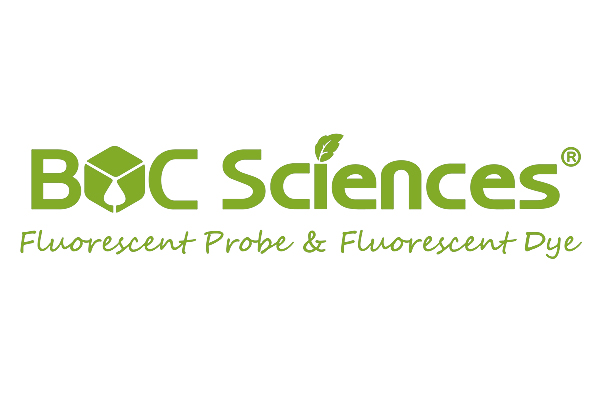
AMCA-6-dUTP
| Catalog Number | A07-0016 |
| Category | RNA/DNA Labeling |
| Molecular Formula | C30H40N5O18P3 (free acid) |
| Molecular Weight | 851.58 (free acid) |
* Please be kindly noted products are not for therapeutic use. We do not sell to patients.
Product Introduction
AMCA-6-dUTP is a fluorescent probe commonly used in the biomedical industry to label DNA during various molecular biology applications. It can be incorporated into DNA using DNA polymerase and serving as a valuable tool for visualizing and studying DNA replication, repair and recombination.
Chemical Information
Product Specification
Application
Computed Properties
| Synonyms | Aminoallyl-dUTP - AMCA; Aminomethylcoumarin-6-dUTP; Aminomethylcoumarin-5-aminoallyl-2'-deoxyuridine-5'-triphosphate, Triethylammonium salt |
| Purity | ≥ 95% by HPLC |
| IUPAC Name | [[(2R,3S,5R)-5-[5-[(E)-3-[6-[[2-(7-amino-4-methyl-2-oxochromen-3-yl)acetyl]amino]hexanoylamino]prop-1-enyl]-2,4-dioxopyrimidin-1-yl]-3-hydroxyoxolan-2-yl]methoxy-hydroxyphosphoryl] phosphono hydrogen phosphate |
| Canonical SMILES | CC1=C(C(=O)OC2=C1C=CC(=C2)N)CC(=O)NCCCCCC(=O)NCC=CC3=CN(C(=O)NC3=O)C4CC(C(O4)COP(=O)(O)OP(=O)(O)OP(=O)(O)O)O |
| InChI | InChI=1S/C30H40N5O18P3/c1-17-20-9-8-19(31)12-23(20)51-29(40)21(17)13-26(38)33-10-4-2-3-7-25(37)32-11-5-6-18-15-35(30(41)34-28(18)39)27-14-22(36)24(50-27)16-49-55(45,46)53-56(47,48)52-54(42,43)44/h5-6,8-9,12,15,22,24,27,36H,2-4,7,10-11,13-14,16,31H2,1H3,(H,32,37)(H,33,38)(H,45,46)(H,47,48)(H,34,39,41)(H2,42,43,44)/b6-5+/t22-,24+,27+/m0/s1 |
| InChIKey | JOYRMWPIHHXOPJ-CFQWBBOESA-N |
| pH | 7.5 ±0.5 |
| Appearance | sterile clear aqueous solution, in 10 mM Tris-HCl |
| Spectroscopic Properties | λexc 350 nm, λem 450 nm, ε 19.0 L mmol-1 cm-1 (Tris-HCl pH 7.5) |
| Storage | store at-20 °CShort term exposure (up to 1 week cumulative) to ambient temperature possible. |
AMCA-6-dUTP, a fluorescent nucleotide analog with exceptional properties, finds widespread application across various bioscience domains. Here are four key applications of AMCA-6-dUTP presented with high perplexity and burstiness:
DNA Labeling: Incorporating AMCA-6-dUTP as a fluorescent marker during DNA synthesis processes, researchers can visualize and track DNA fragments under a fluorescence microscope, enabling a deeper exploration of DNA replication, repair mechanisms, and gene expression intricacies.
In Situ Hybridization: Leveraging AMCA-6-dUTP as a fluorescent probe in in situ hybridization techniques, researchers can detect specific nucleic acid sequences within fixed tissues, unveiling gene expression patterns in diverse cell types or tissue environments, enriching studies in developmental biology and pathology with vibrant insights.
Flow Cytometry: In the realm of flow cytometry, AMCA-6-dUTP plays a crucial role in analyzing cell populations based on their genomic content. By introducing AMCA-6-dUTP into cells undergoing DNA synthesis, researchers can discern different phases of the cell cycle, a technique indispensable for investigations in cell proliferation, cancer research, and drug screening endeavors.
Fluorescent In Situ PCR: Expanding the horizons of gene expression analyses, AMCA-6-dUTP is instrumental in fluorescent in situ PCR, a sophisticated method intertwining in situ hybridization and PCR amplification. With AMCA-6-dUTP, researchers can visualize amplification products directly within cells or tissues, offering a spatial context to gene regulation studies and enhancing comprehension of cellular responses and gene dynamics.
| XLogP3 | -4.3 |
| Hydrogen Bond Donor Count | 9 |
| Hydrogen Bond Acceptor Count | 19 |
| Rotatable Bond Count | 19 |
| Exact Mass | 851.15812044 g/mol |
| Monoisotopic Mass | 851.15812044 g/mol |
| Topological Polar Surface Area | 349Ų |
| Heavy Atom Count | 56 |
| Formal Charge | 0 |
| Complexity | 1770 |
| Isotope Atom Count | 0 |
| Defined Atom Stereocenter Count | 3 |
| Undefined Atom Stereocenter Count | 0 |
| Defined Bond Stereocenter Count | 1 |
| Undefined Bond Stereocenter Count | 0 |
| Covalently-Bonded Unit Count | 1 |
| Compound Is Canonicalized | Yes |
Recommended Services
Recommended Articles

- Hoechst Dyes: Definition, Structure, Mechanism and Applications
- Mastering the Spectrum: A Comprehensive Guide to Cy3 and Cy5 Dyes
- Fluorescent Probes: Definition, Structure, Types and Application
- Fluorescent Dyes: Definition, Mechanism, Types and Application
- Coumarin Dyes: Definition, Structure, Benefits, Synthesis and Uses
- Unlocking the Power of Fluorescence Imaging: A Comprehensive Guide
- Cell Imaging: Definitions, Systems, Protocols, Dyes, and Applications
- Lipid Staining: Definition, Principles, Methods, Dyes, and Uses
- Flow Cytometry: Definition, Principles, Protocols, Dyes, and Uses
- Nucleic Acid Staining: Definition, Principles, Dyes, Procedures, and Uses
Recommended Products
Online Inquiry







